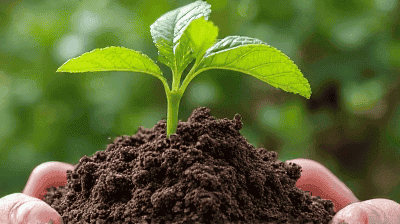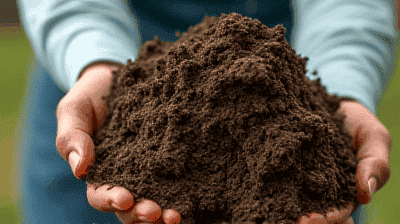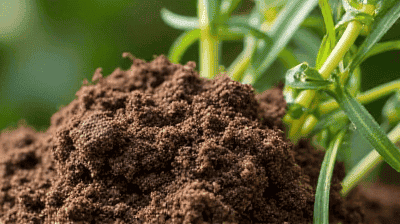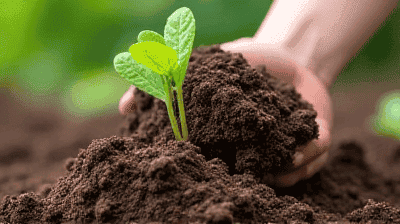
In recent years, composting has gained popularity among environmentally conscious individuals and urban gardeners alike. This natural process transforms food scraps and yard waste into nutrient-rich soil, offering a sustainable solution to organic waste disposal and promoting healthy plant growth. Composting not only reduces landfill waste but also helps mitigate climate change by lowering greenhouse gas emissions.
Composting is the aerobic decomposition of organic materials, such as food scraps, yard waste, and other biodegradable materials, by microorganisms. During this process, microbes, fungi, and other decomposers break down complex organic matter into simpler substances, ultimately transforming it into a rich, dark soil amendment known as compost. This nutrient-dense material is then used to enrich garden soil, improve soil structure, and support healthy plant growth.
Waste Reduction: Composting significantly reduces the amount of organic waste sent to landfills. By decomposing food scraps and yard waste at home, individuals can minimize their overall waste footprint.
Soil Enrichment: The resulting compost is rich in essential nutrients, such as nitrogen, phosphorus, and potassium. Adding compost to garden soil enhances its fertility, promoting healthy plant growth.
Water Retention: Compost improves soil structure, allowing it to retain moisture more effectively. This helps reduce the need for frequent watering and conserves water resources.
Erosion Prevention: Compost can stabilize soil, reducing erosion and preventing runoff. This is especially important in areas susceptible to soil degradation.
Carbon Sequestration: By composting organic materials rather than sending them to landfills, carbon is retained in the soil instead of being released as methane, a potent greenhouse gas. This helps mitigate climate change.
The composting process involves several stages, each defined by specific microbial activity and environmental conditions. Understanding these stages can help anyone interested in composting to optimize the conditions for efficient decomposition.
Initial Setup: The compost pile is built with a balanced mix of carbon-rich (browning) and nitrogen-rich (green) materials. Proper aeration and moisture levels are established to support microbial activity.
Decomposition: This phase is characterized by the breakdown of organic matter, primarily carried out by mesophilic bacteria. These microbes thrive at moderate temperatures and start to break down materials, generating heat.
Thermophilic Stage: As the temperature of the compost pile rises due to microbial activity, thermophilic bacteria take over. This high-temperature phase accelerates decomposition, killing pathogens and weed seeds.
Cooling and Curing: After several weeks to months, the temperature drops, and the compost enters the curing phase. During this time, microbial activity continues, and the compost matures.
Maturation: Once the compost reaches a stable temperature and has a dark, crumbly texture, it is considered finished. Mature compost has a pleasant earthy smell and can be applied to gardens or used as a soil amendment.

Carbon-rich materials provide energy for microbes and contribute to the structure of the compost pile. These materials are typically dry and brown in color. Examples include:
Nitrogen-rich materials provide essential protein for composting microorganisms and help maintain a balanced carbon-to-nitrogen ratio. These materials are usually wet and green. Examples include:
Moisture is critical for microbial activity in composting. Ideally, compost should have a moisture content similar to a damp sponge. Too much moisture can lead to anaerobic conditions, while too little moisture can inhibit microbial activity.
Aeration is essential for successful composting. Turning or mixing the compost pile regularly introduces oxygen, allowing aerobic bacteria to thrive and preventing odor-causing anaerobic bacteria.
One of the key factors for successful composting is achieving the correct carbon-to-nitrogen ratio. A ratio of approximately 30:1 (30 parts carbon to 1 part nitrogen) is ideal. This balance ensures that microorganisms have ample energy (carbon) and the necessary nutrients (nitrogen) for effective decomposition.

Creating a successful compost pile involves several steps. Below is a guide to help you set up and maintain your compost system.
There are several methods for composting, including:
Bin Composting: Using a compost bin, often made of wood, plastic, or wire, to contain the compost. This method helps maintain structure and retention of heat and moisture.
Pile Composting: Simply piling organic materials in an open space. This method is easier to manage for larger amounts of waste but may require more frequent turning.
Vermicomposting: Utilizing worms to break down organic material. This method is efficient and produces high-quality compost but requires specific care and attention.
Choose a shady, well-drained location for your compost pile or bin. This can help regulate temperature and moisture levels. Make sure the area is easily accessible for regular maintenance.
Start with a base layer of coarse materials, such as straw or wood chips, to promote airflow. Alternate layers of brown (carbon-rich) and green (nitrogen-rich) materials to maintain the correct ratio. Aim for 3 parts browns to 1 part greens.
Water the compost pile if it appears too dry. Conversely, if it becomes too wet, turn it more frequently to aerate and promote drainage. A well-balanced compost pile should feel like a damp sponge.
Regularly turn or mix the compost pile every few weeks to introduce oxygen and promote even decomposition. This also helps prevent odors and anaerobic conditions.
Composting is a natural process that takes time, typically several weeks to months. Observe the pile for changes in temperature, moisture, and texture. The compost is ready when it has a dark, crumbly appearance and a pleasant earthy smell.
Foul odors can indicate anaerobic conditions or an imbalance of materials. To address this:
Insects or rodents may be attracted to compost piles if food scraps are not buried or if the pile is too wet. To prevent this:
If compost is decomposing slowly, it may be due to insufficient moisture, lack of aeration, or improper material ratios. To speed up the process:

Once your compost is ready, it can be applied in a variety of ways:
Incorporate finished compost into garden beds or potting soil to enhance nutrient content, improve soil structure, and promote healthy plant growth.
Use compost as a natural mulch around plants. This helps retain moisture, suppress weeds, and provide a slow-release source of nutrients.
Mix compost with water to create a compost tea. This liquid can be used as a nutrient-rich fertilizer for indoor and outdoor plants, giving them a boost of nutrients.
Composting is a powerful tool for reducing organic waste and creating nutrient-rich soil. By understanding the science behind the composting process and implementing effective techniques, anyone can turn food scraps into valuable resources that benefit the environment and promote healthy plant growth.
Not only does composting contribute to a more sustainable lifestyle, but it also encourages us to be mindful of our waste and embrace a circular approach to resource management. By making composting a regular practice, each individual can play a vital role in creating a greener, healthier planet.